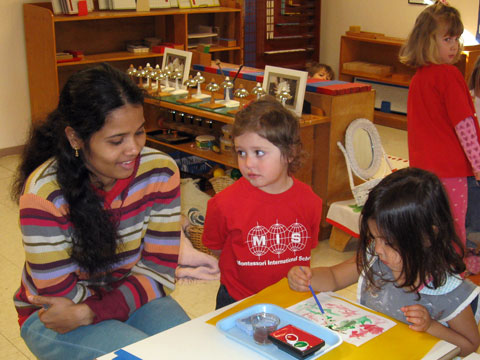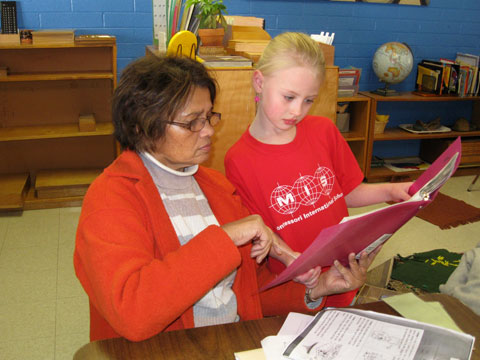Doctor Maria Montessori
Maria Montessori (1870 - 1952) had an educational background based in scientific study. She received a Doctor of Medicine degree in 1896 — the first female in Italy to achieve this status. Dr. Montessori’s early work focused on the children of the asylums in Rome. Through this work, Dr. Montessori, unlike others working with children in the asylums, recognized the children’s capacity for learning.
Because of her success with the children in the asylums, Dr. Montessori was appointed by the Minister of Education in Rome to run a school for “deficient” children from the schools of Rome and mentally disabled children from Rome’s asylums. Dr. Montessori utilized the scientific method in order to develop the means for teaching these children. She spent much of her time during each day observing the characteristics of the children. At night, she would write out her notes, analyze them, and make materials for use in her classroom. The following day she would test these new materials at the school. Again she would use her skills of observation to decipher which materials and which lessons appealed to the nature of the children. The children in Dr. Montessori’s first school, despite their disabilities, tested at the same academic level as the children in the traditional schools of Rome.
Rather than simply relishing the success of her students, Dr. Montessori wondered what was lacking in Rome’s schools that would allow children of less ability to test at the same level as the more intellectually gifted children from the city’s schools. It wasn’t until 1906 that she would have the opportunity to find the answer to this question. In the early 1900’s there existed in Rome a slum district known as the San Lorenzo quarter. Two buildings housed the poorest class in Rome. It was in this environment that Dr. Montessori made the discovery that would direct her life’s work.
During the day, the adults living at San Lorenzo would go off to work, the older children would go to school, and the younger children would be left alone to fend for themselves. These young children, between the ages of 3 and 6 years, began to vandalize the buildings which made up their world. The governing body decided that it would be less expensive to set aside one room to be used as a nursery and to hire a person to take care of these children than it would be to continue paying for the walls and floors to be repainted and repaired. Dr. Montessori eagerly consented to the position of caretaker for these 60 unfortunate children. Within two years, her discoveries regarding the natural characteristics of young children were known worldwide.
Dr. Montessori continued to use the scientific method to develop a method not only for educating young children, but also for educating elementary aged children. By the time of her death, she had begun to work on a method for educating adolescents as well. In 1929, Dr. Montessori founded the Association Montessori Internationale (AMI) to establish training centers that would prepare teachers to carry out her method. Montessori, who received three nominations for the Nobel Peace Prize, died in Holland in 1952. Her discoveries regarding the characteristics of the child have influenced scientists, educators, and most importantly, the many fortunate children who have had the opportunity to attend Montessori schools.



